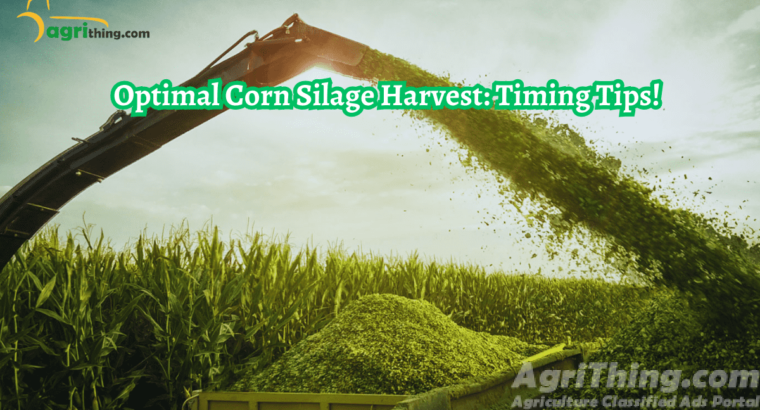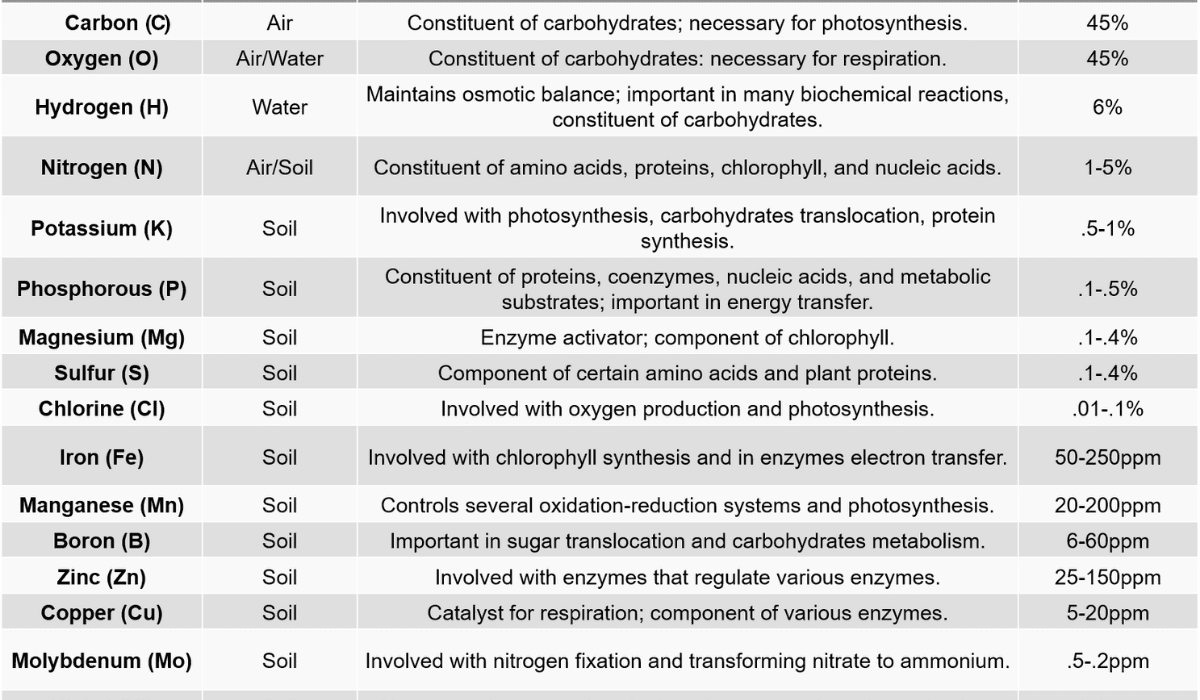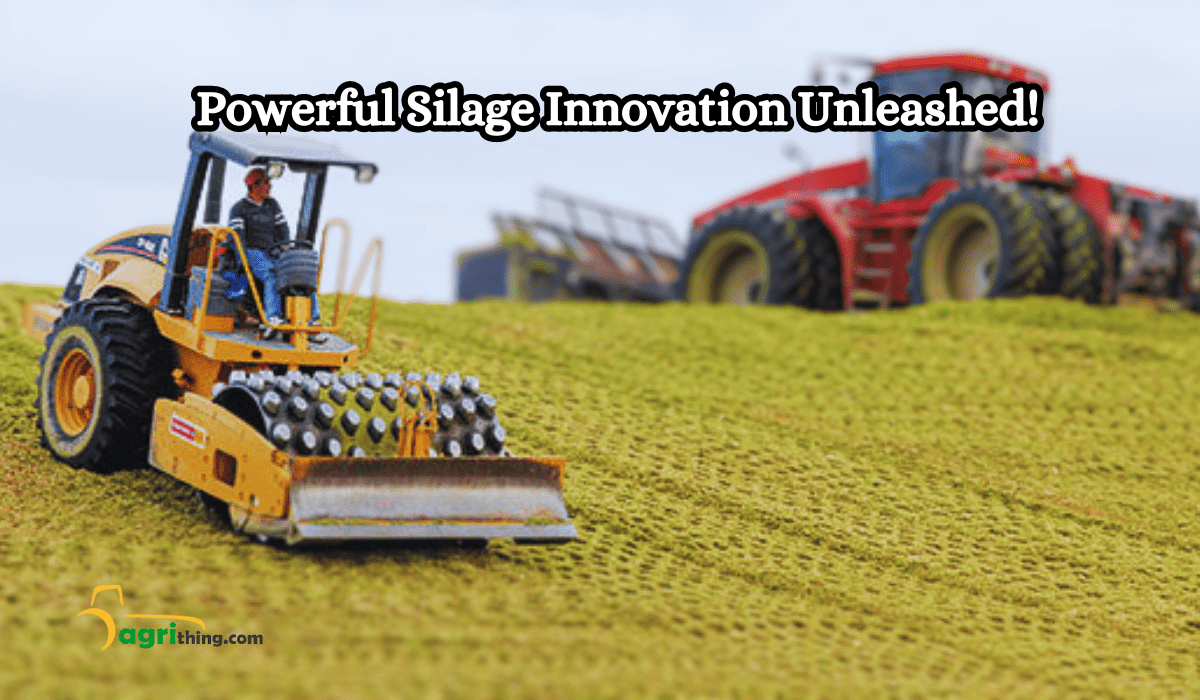Timing Matters: Corn Silage Harvest Timing Secrets Revealed
Corn silage is a valuable feed option for livestock farmers, providing a nutrient-rich and easily digestible forage source. However, it is important to pick the right Corn silage harvest timing. It can significantly impact forage quality and nutritional value. If it’s harvested too soon or too late, the silage won’t be as good, and the animals might not do as well. This article will explore the key considerations for corn silage harvest timing, helping farmers make informed decisions to maximize their yields and optimize forage quality.
Table of Contents
Importance of Corn silage harvest timing
The proper Corn silage harvest timing is vital for maximizing nutrient content. It affects the nutrients, taste, and how efficiently it’s used for feed. Harvesting at the right time ensures a good balance between quantity and quality. This means getting the most energy and nutrients from the crop. Harvesting on time is also important to avoid losing yield because of bad weather or other unexpected things.
Factors Affecting Corn Silage Harvest Timing
Here are some important factors affecting Corn Silage Harvest Timing:
- Maturation: The crop’s level of maturity is crucial. If harvested too early, the product may not be fully developed. On the other hand, waiting too long can result in overripeness or spoilage.
- Ripeness indicators: Some crops have visual cues that show they’re ready for harvest. These cues can include changes in color or texture. Monitoring these indicators helps determine the best time to harvest.
- Weather conditions: Weather plays a significant role in harvest timing. Temperature, rainfall, and sunlight can impact crop growth and readiness for harvest. Unfavorable weather may cause delays or expedite the harvest.
- Pests and diseases: Pests or diseases can affect when to harvest. Early harvesting may be necessary in some cases to prevent further damage or the spread of pests and diseases.
- Market demand: Harvest timing can be influenced by market demand and prices. Farmers may harvest earlier or delay harvesting to align with favorable market conditions and maximize profits.
- Machinery and labor availability: Machinery and labor also determine harvest timing. Having enough resources to efficiently harvest the crop is important and can impact the decision of when to harvest.
Assessing Corn Plant Maturity: A Simple Guide
How to Tell When Corn is Ready
To know if corn is ripe, you can look at it. There are a few things to pay attention to:
- Color Changes: When the lower leaves of the corn plant turn brown, it means the plant is almost mature.
- Kernel Appearance: Check the kernels. If there is a black layer at the bottom, it means the corn is fully mature. The black layer is a thin, dark line at the tip of the kernel.
- Husk Drying: As the corn plant matures, the husks around the ears of corn dry out. Watching the husks dry can give you an idea of how mature the plant is.
The Milk Stage
The milk stage is an important sign of corn maturity. It shows the transition from a milky consistency to a doughy one. You can see a visible line on the kernels. Harvesting the corn when the milk line is at the right level ensures the best starch content. Look for a clear milk line moving down from the top of the kernel.
Checking Moisture Content
Knowing the moisture content of the corn plant is important for deciding when to harvest. Here are two ways to measure it:
- Moisture Meter: Farmers can use a special moisture meter for corn to get accurate measurements. This tool is quick and reliable.
- Representative Plant Samples: Drying a few plant samples in an oven can also help determine moisture content. You can estimate the moisture content by measuring the weight loss during drying.
NDF Digestibility
Another thing to think about when assessing corn maturity is NDF digestibility. NDF represents the cell wall content of the corn plant, and its digestibility can change as the plant grows. Harvesting the corn at the right time ensures better NDF digestibility and higher-quality forage.
Impact of Weather Conditions on Corn Silage Harvest Timing
The impact of weather on Corn Silage Harvest Timing varies depending on the crop grown. Factors influenced by weather conditions include:
- Growing season length: Weather variations, such as temperature, rainfall, and frost dates, can shorten or lengthen the growing season, affecting harvest timing.
- Temperature: Warmer temperatures accelerate plant development, while cooler temperatures slow it down. Extreme fluctuations can damage crops and impact harvest timing and quality.
- Rainfall: Adequate rainfall is necessary for crop growth. Insufficient or excessive rainfall can delay maturity or cause premature ripening, respectively. Excessive rainfall can also lead to waterlogging and diseases, requiring early harvest.
- Drought: Water stress from drought can stunt growth, reduce yields, and prompt early maturation. In severe cases, early harvesting may be necessary to salvage some yield.
- Pests and diseases: Weather conditions affect pest and disease prevalence. Favorable weather patterns can lead to outbreaks, necessitating early harvest to minimize damage and prevent further loss.
- Sunlight: The amount and intensity of sunlight impact photosynthesis and sugar accumulation in crops. Sufficient sunlight is crucial for optimal crop development. Cloudy or overcast weather can delay harvest by reducing sunlight availability.
Forage Quality Objectives and Corn Silage Harvest Timing
| Forage Quality Objective | Corn Silage Harvest Timing |
|---|---|
| Maximum Dry Matter (DM) Content | Harvest when the crop is between 30-38% DM |
| Optimal Starch Content | Harvest when the crop has reached its maximum starch accumulation, typically at 35-45% DM |
| Ideal Fiber Content | Harvest when the crop has an appropriate balance of NDF (Neutral Detergent Fiber) and ADF (Acid Detergent Fiber) |
| Maximum Nutrient | Digestibility Harvest when the crop is at its peak digestibility, usually between 30-45% DM |
| Optimal Maturity | Harvest when the crop has reached the desired maturity stage, indicated by the presence of brownish-black layer at the base of the corn stalks |
| Minimal Fermentation Losses | Harvest before the crop becomes overripe and experiences excessive field losses |
Conclusion
Corn silage harvest timing is a crucial decision that directly impacts the quality and nutritional value of the feed. It affects the quality and nutritional value of the feed. Farmers should consider moisture and starch levels, how much dry matter they’ll get, how good the forage is, and the environment. They should also check how mature the plants are. Farmers can get more corn silage and better feed by paying attention to these things. This will help their animals grow better and make more money.
Frequently Asked Questions (FAQ’s)
What is the ideal moisture content for corn silage harvest?
The ideal moisture content for corn silage harvest ranges from 60% to 70%. Harvesting within this range ensures proper fermentation and minimizes nutrient losses.
How can I assess the maturity of corn plants for silage harvest?
You can assess corn plant maturity by considering visual indicators such as color changes, kernel appearance, and husk drying. Additionally, monitoring the kernel milk line and measuring plant moisture content can aid in determining the appropriate harvest timing.
Why is starch content important in corn silage?
Starch is a primary source of energy in corn silage. Harvesting at the right time allows for maximum starch accumulation in the grains, ensuring optimal energy levels for livestock and improved feed conversion efficiency.
What are the key factors affecting corn silage harvest timing?
Several factors influence corn silage harvest timing, including moisture content, starch content, dry matter yield, forage quality, environmental conditions, and assessing plant maturity. Considering these factors collectively helps farmers make informed decisions for optimal harvest timing.
How can I preserve the nutritional value of corn silage during harvest?
Employing proper harvesting techniques such as efficient chopping, adequate kernel processing, and timely packing and sealing of the silage is critical to preserving the nutritional value of corn silage. These steps ensure effective fermentation and minimize nutrient losses.
Related Articles
Want to purchase top-quality silage? Visit our Agricomplex website to explore our wide range of silage products.
People Also Asked
What is the importance of corn silage harvest timing?
Corn silage harvest timing is crucial for maximizing nutrient content, balancing quantity and quality, and avoiding yield losses due to bad weather.
What factors affect corn silage harvest timing?
Factors include crop maturation, ripeness indicators, weather conditions, pests and diseases, market demand, and machinery and labor availability.
How can I tell when corn is ready for harvest?
Look for brown lower leaves, a black layer at the bottom of kernels, and drying husks as signs of corn maturity.
What is the ideal moisture content for corn silage harvest?
The ideal moisture content for corn silage harvest is typically between 60% and 70%.
Why is starch content important in corn silage?
Starch is a crucial energy source in corn silage, and harvesting at the right time ensures maximum starch accumulation for livestock energy and feed efficiency.




